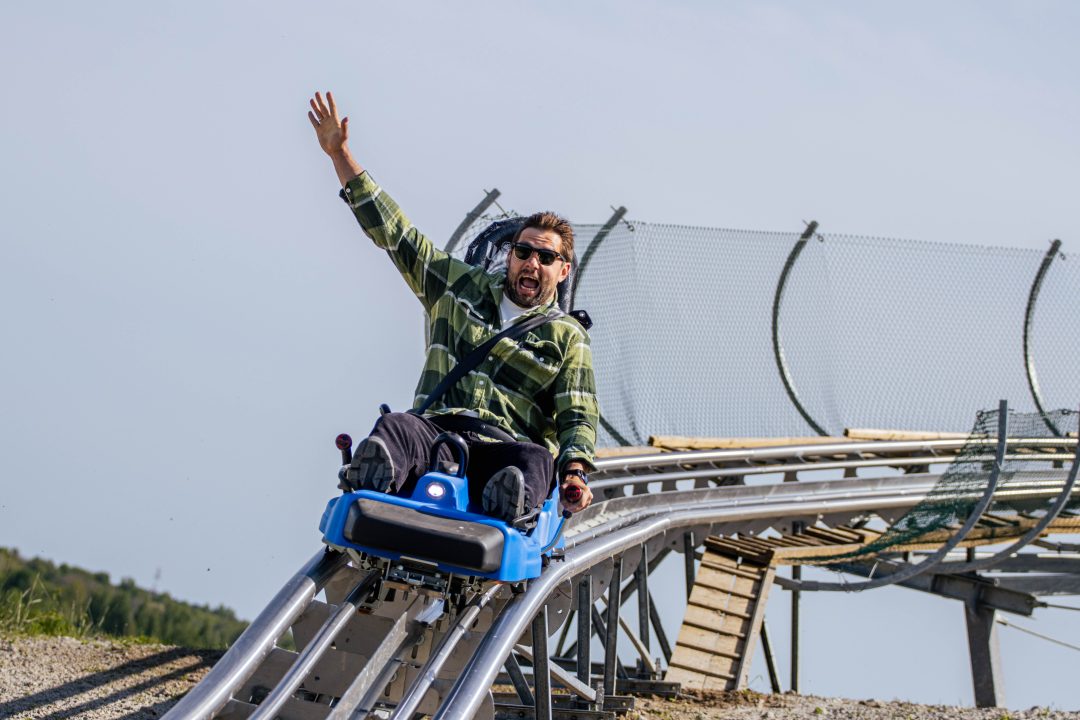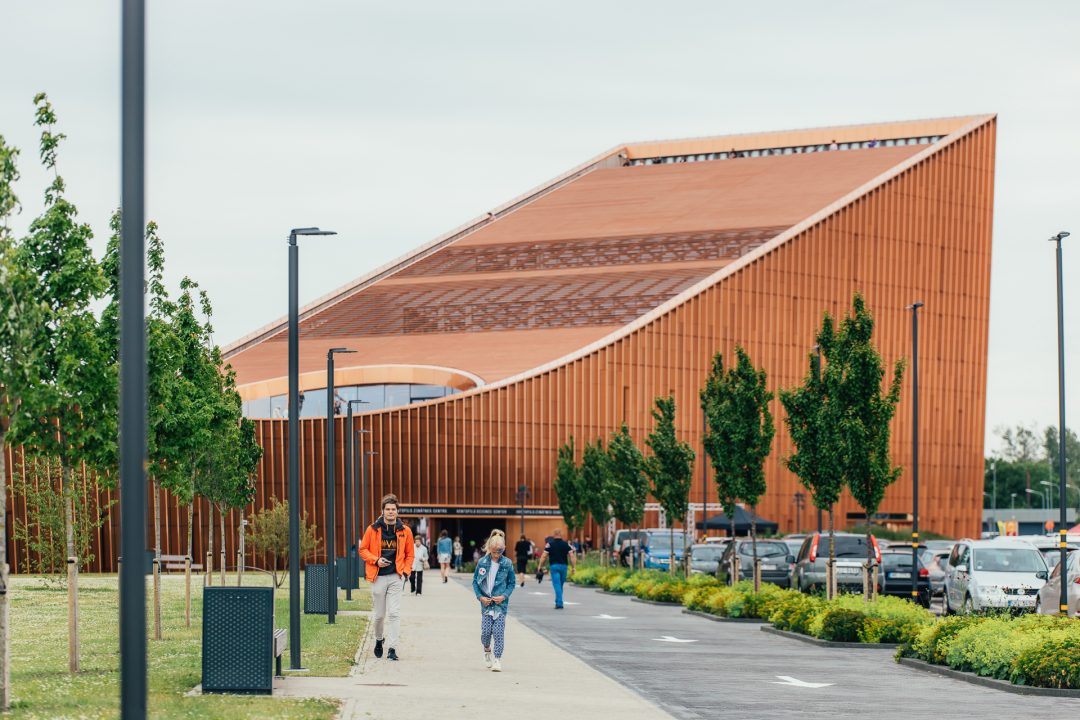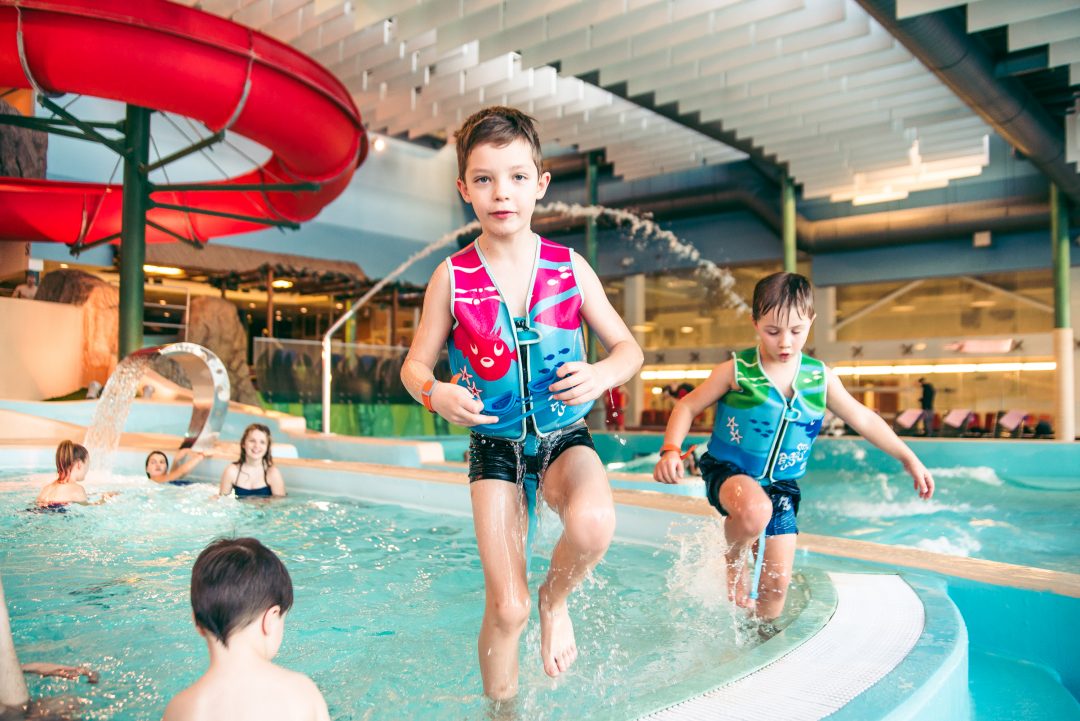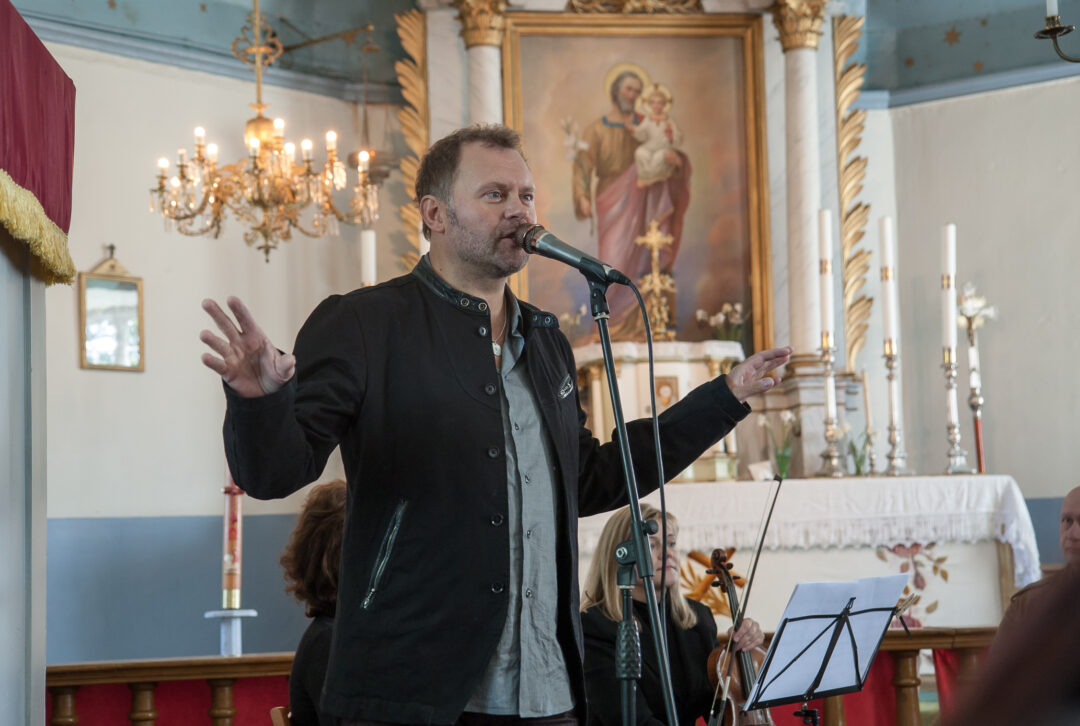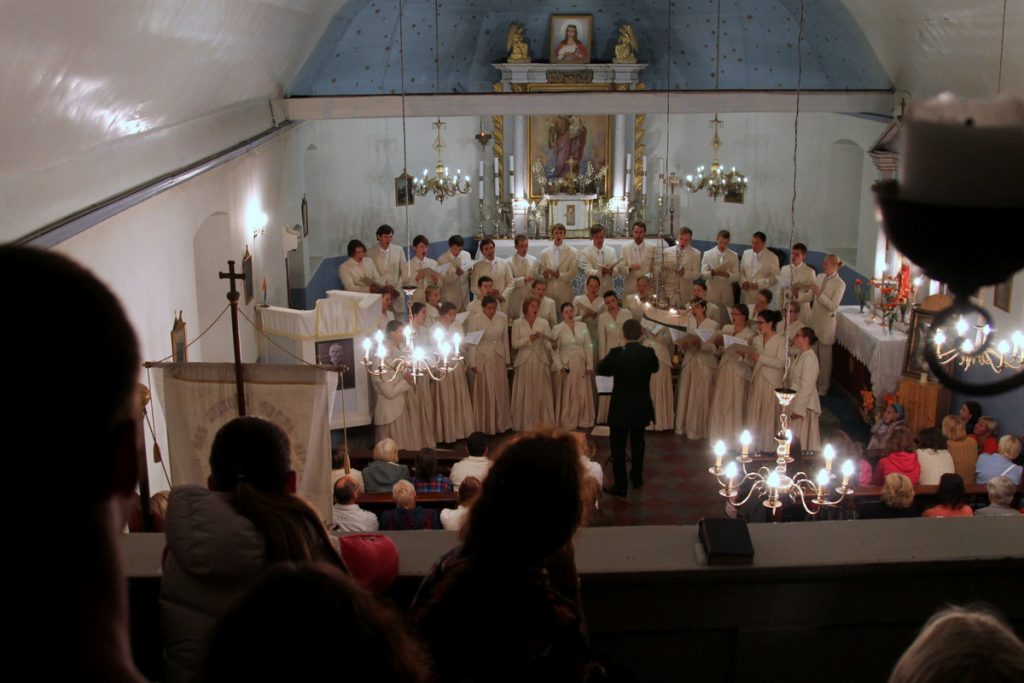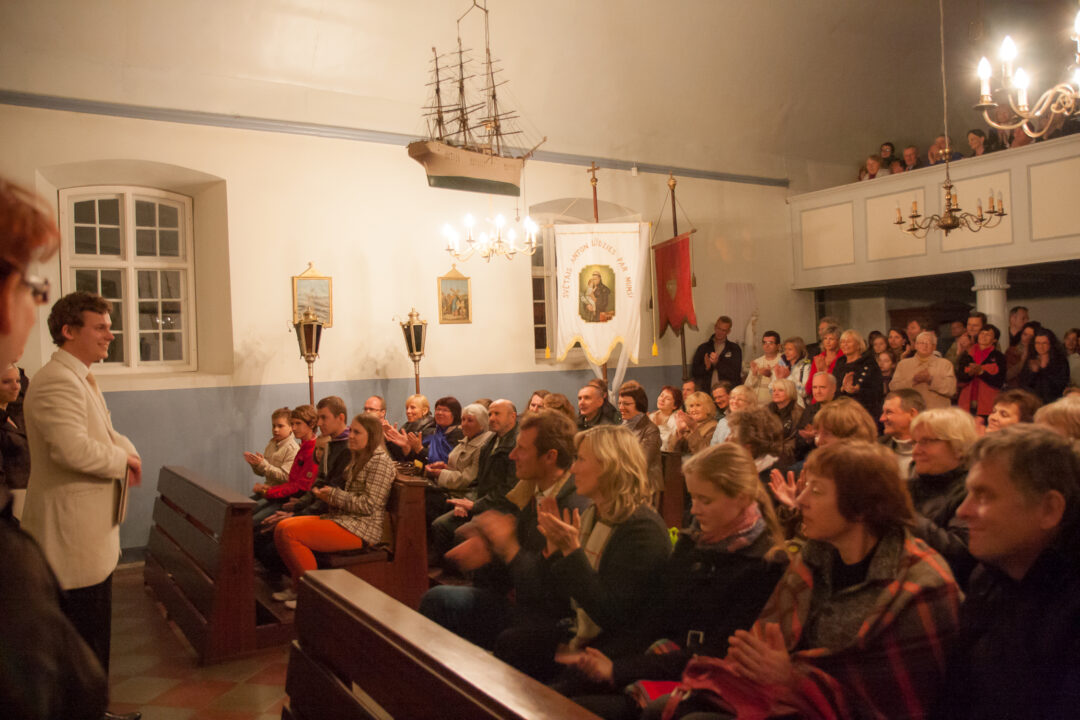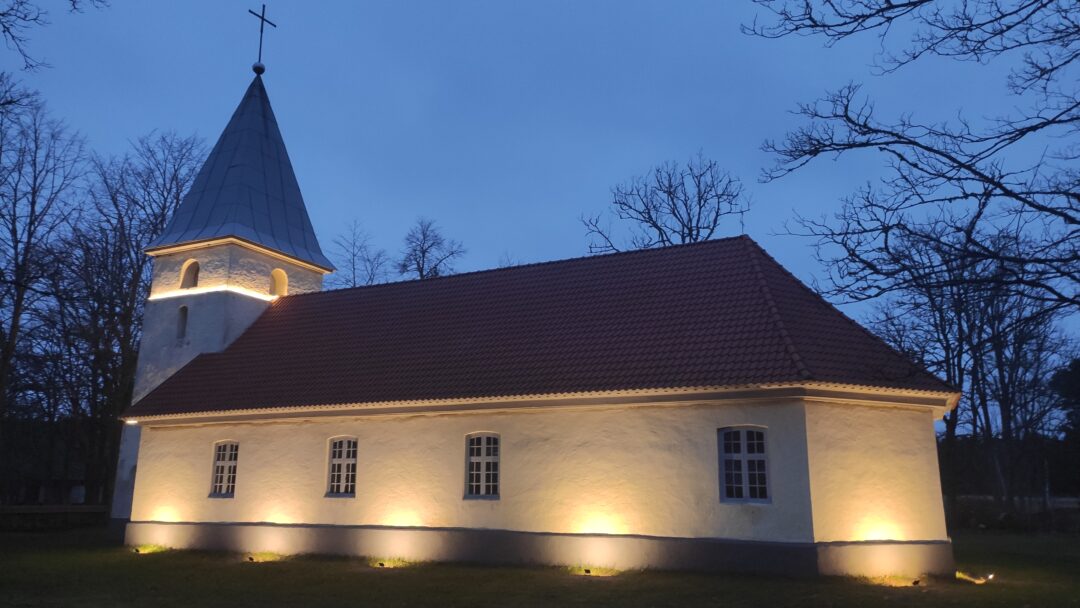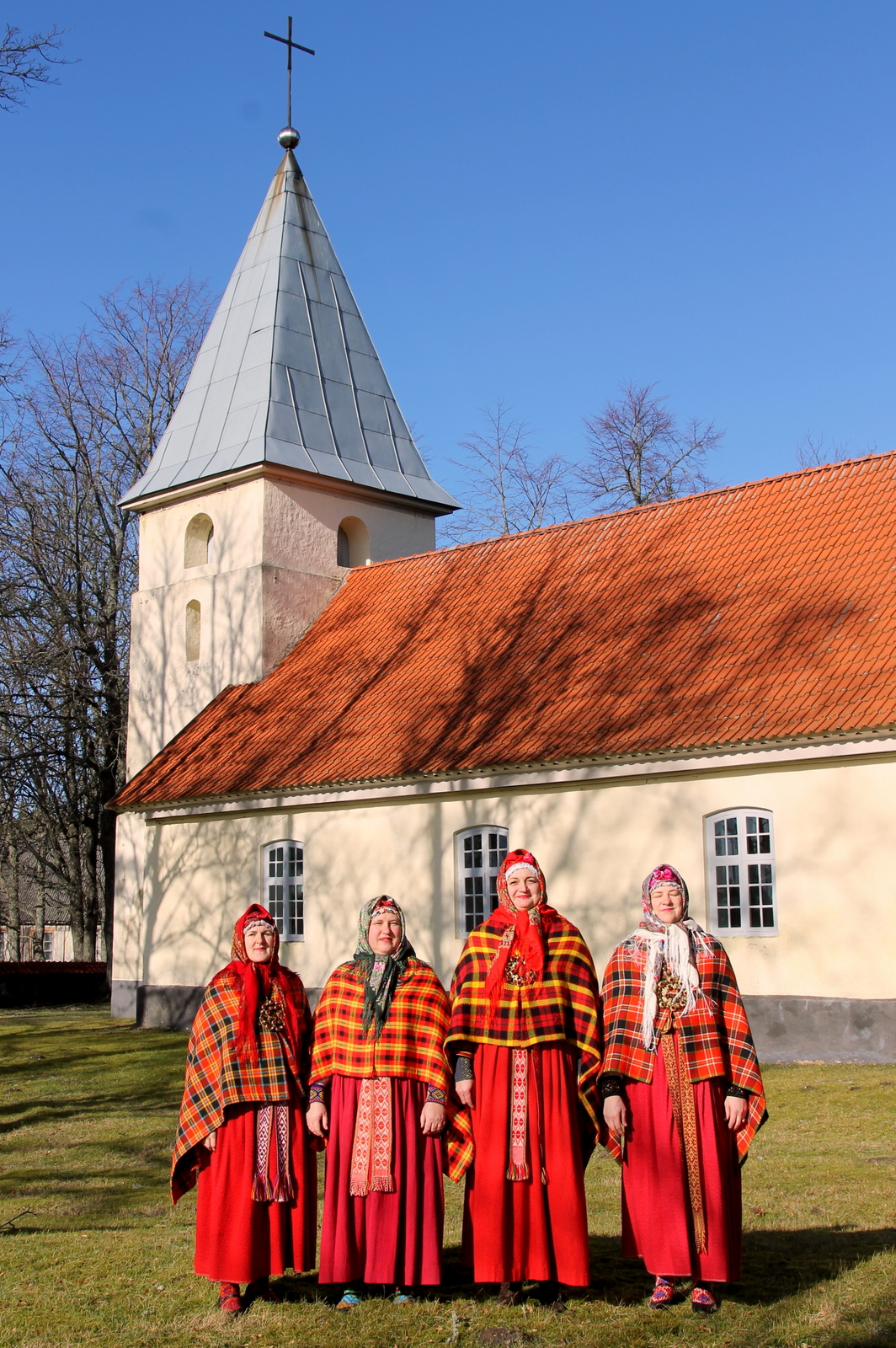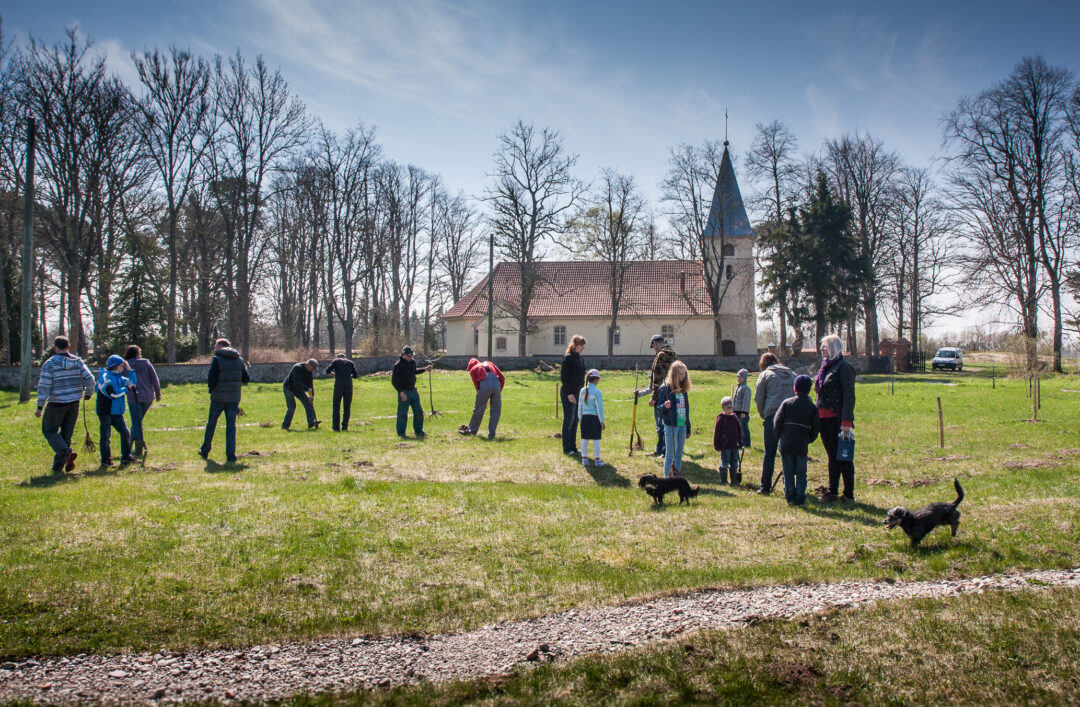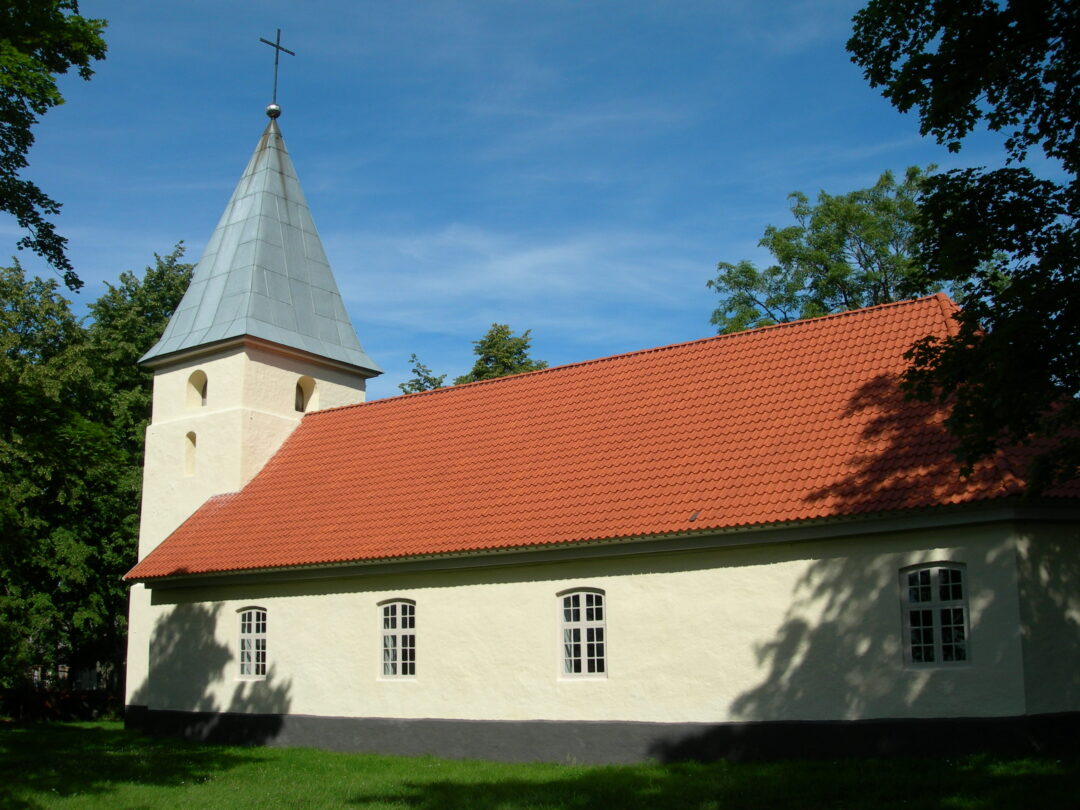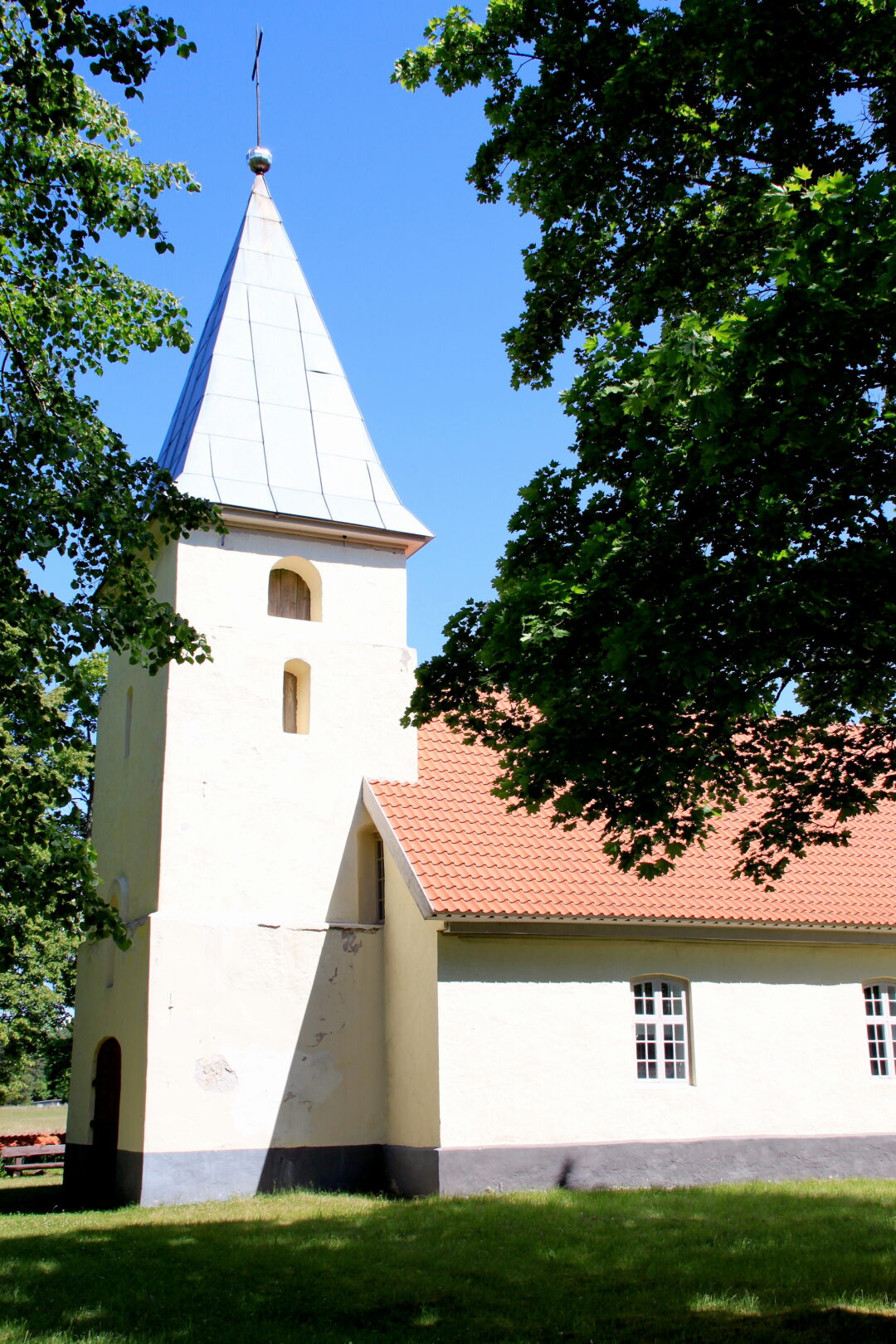Story tells that the first church was washed into the sea because of the coastal erosion. Unlike the rest of Lutheran Kurzeme this church is Catholic – it is characteristic for Suits district.
The church as it is nowadays was built in 1861and in 1862 it was consecrated in honour of St. Joseph (titulus ecclesiae). The church was expanded in 1870 by adding a tower to the entrance, the lower part of which now forms the front room of the church. The church has two altars and the tower has two bells.
One of the three historical churches of the Suitu region, a part of the Suitu cultural space, included in the UNESCO cultural heritage list. uilt in the 19th century. A summer gate and an information stand have been installed in the church.
The church tower is open for viewing every day during the summer season.
The summer gate is made of glass so that you can see the interior of the church.
A sailboat is hung near the church, which tells the story of the rescue of one boat. There is a legend about the founding of Jūrkalne village. Once, in the Middle Ages, a boat ran into a storm near Jūrkalne. The captain of the ship swore to the crew that if they found shore, he would build a church where they landed as a sign of gratitude to God. Soon the ship managed to get out of the stormy seas – so the first church was built in this place. By the way, at that time Jūrkalni was called Feliksberga – Laimingojės Kalnu. Also in the Middle Ages, the villages were led by Jorenzels, Pilsbergs. 1786. In 1786, Duke Peter Byron rebuilt the wooden village church into a solid brick bastion. In 1870, there are towers in front of the churches. The current city of Jūrkalne was granted in 1928.
